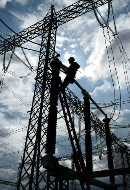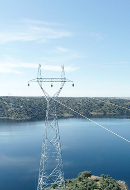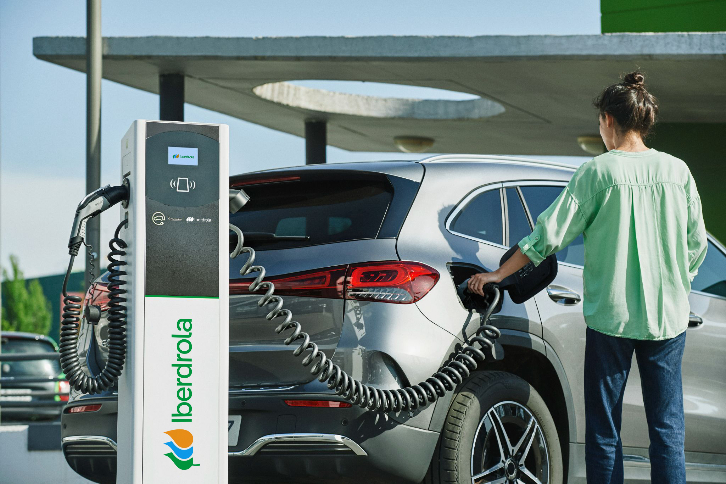What is electrical energy
Electrical energy and its importance
Electrical network Electric cars Energy efficiency Decarbonisation Featured
Electrical energy is a form of energy resulting from the flow of charged particles, such as electrons, through a conductor. Its main value lies in its versatility, its energy efficiency and its low environmental impact when used with renewable sources.
Let's start with the basics: what is electrical energy? It is a form of energy resulting from the flow of charged particles, such as electrons, through a conductor. This energy is generated from a variety of sources, such as power plants, solar panels, wind turbines, among others.
Electricity is a very versatile form of energy, as it can be easily transformed into other forms of energy, such as light, heat or motion. It is used in a wide variety of applications, from lighting and running household appliances to powering large industries and transport systems.
The flow of electricity occurs when there is a difference in electrical potential between two points, which creates an electric field that drives electrons to move through the conductor. This potential difference is measured in volts and the resulting flow of electric current is measured in amperes.
How is electrical energy generated?
If we ask ourselves how electricity is generated, there are several sources that are divided especially into renewable and non-renewable. Each method has its own environmental, economic and social implications, and the choice between them often depends on factors such as resource availability, environmental impact and the energy policies of each country.
Renewable energy sources
The generation of electricity through renewable energy sources harnesses natural resources that are inexhaustible or rapidly regenerated. These technologies are key in the transition to a more sustainable energy system that is less dependent on fossil fuels. It also helps to reduce greenhouse gas emissions and mitigate climate change. Renewable sources include:
- Photovoltaic solar energy: Solar radiation is used to generate electricity through photovoltaic solar panels. These panels contain photovoltaic cells that convert sunlight directly into electricity through the photovoltaic effect. Solar energy can also be harnessed through concentrating solar power systems, where solar radiation is used to heat a fluid and generate steam that drives turbines connected to generators.
- Wind energy: The kinetic energy of the wind is converted into mechanical energy by wind turbines. When the wind turns the blades of wind turbines, they activate generators that produce electricity. Wind turbines can be installed either on land or offshore.
- Hydroelectric energy: Harnesses the kinetic energy of moving water to generate electricity. In hydroelectric energy plants, the water stored in a dam is released and flows through pipes to turbines, which activates generators as they rotate. There are also tidal power systems that harness tides and ocean currents to generate electricity.
- Geothermal energy: The heat from the Earth's interior is used to generate electricity. In these plants, geothermal heat is used to heat water and produce steam that drives turbines connected to generators. This type of energy is usually available in regions with geothermal activity, such as volcanic or tectonically active areas.
How is electricity generated?
There are various sources, which are mainly divided into renewable and non-renewable.
1 Geothermal energy 2 Wind energy onshore 3 Hydroelectric energy 4 Solar photovoltaic energy 5 Wind energy offshoreNon-renewable energy sources
They are polluting and finite

Nuclear energy

Conventional thermal energy (coal, oil and natural gas)
 SEE INFOGRAPHIC: How is electricity generated? [PDF]
SEE INFOGRAPHIC: How is electricity generated? [PDF]
Non-renewable energy sources
The generation of electricity using non-renewable energy sources involves the use of natural resources that are polluting and finite or regenerate at a much slower pace than human consumption. Although they still play an important role in electricity production in many parts of the world, there is a growing interest in promoting renewable energy and developing cleaner and more sustainable generation technologies to reduce environmental impact and mitigate climate change. Some of these non-renewable sources are:
- Conventional thermal energy (coal, oil and natural gas): These energy sources are used in conventional thermal power plants. The process involves the combustion of fossil fuel to heat water and produce steam. This steam is used to turn turbines connected to generators that produce electricity. The main disadvantage of this method is the emission of large amounts of greenhouse gases and other air pollutants.
- Nuclear energy: This energy is generated by nuclear fission, where the heavy atomic nucleus such as uranium split into smaller atoms, releasing a large amount of energy in the form of heat. This heat is used to heat water and produce steam that drives turbines connected to generators. Although nuclear power does not produce greenhouse gas emissions during electricity generation, it raises concerns about nuclear safety, radioactive waste management and the proliferation of nuclear weapons.

Do you know what an electrical substation is?
They are an essential element for the operation of the electricity grid.

History of electricity
Edison's first electric power plant only supplied current to a few light bulbs.

What is high, medium and low voltage?
Learn what electrical voltage is, what it is used for and its different types.

The keys to self-consumption of electricity
Renewable energies have opened up a new way of consuming electricity.

Electrify the economy
The electricity sector is the best available energy vector to incorporate renewable facilities.
Types of electrical energy
We have already seen the types of electrical energy according to the way in which it is generated, but it can also be classified according to its use, depending on how it is applied in different sectors and activities. They can be classified as follows:

Residential energy: Energy used in homes and residences to power appliances, lighting, heating, cooling and other devices.

Industrial energy: Used in industrial processes to power machinery, production equipment, air conditioning systems, industrial lighting, and other specific uses within industrial facilities.

Commercial energy: It is used in commercial establishments such as shops, offices, shopping centres, restaurants, hotels, among others, to supply lighting systems, computer equipment, refrigeration systems, and other electrical devices.

Transport energy: Refers to electricity used to power electric vehicles, such as cars, buses, trains and electric bicycles. It also includes infrastructure for charging electric vehicles.

Utility energy: Energy supplied by utilities for general use in a community, including public lighting, public transport systems, water pumping systems, among other essential services.

Backup and emergency power: Used for back-up power systems in case of power outages, such as diesel generators, battery backup systems and other emergency devices.
 Information and communications technology (ICT) energy: Energy used by consumer electronic devices, such as computers, mobile phones, tablets, servers, routers, and other information and communications technology equipment.
Information and communications technology (ICT) energy: Energy used by consumer electronic devices, such as computers, mobile phones, tablets, servers, routers, and other information and communications technology equipment.
Advantages of electrical energy
Electrical energy, especially from renewable energy sources, offers a number of significant advantages that make it a very attractive option compared to other forms of energy. Some of its advantages are the following:
- Versatility: Electricity can be easily transformed into other forms of energy, such as light, heat or motion, making it highly versatile and suitable for a wide range of applications in homes, industry, transport and more.
- Energy efficiency: Modern electrical systems tend to be more efficient in terms of energy conversion and use compared to other forms of energy. For example, electric motors tend to be more efficient than internal combustion engines.
- Clean and low pollution: If generated using renewable energy sources such as solar, wind or hydroelectric energy, it can be a relatively clean and low polluting form of energy.
- Ease of transport and distribution: Electricity is easy to transport over long distances through transmission and distribution networks, making it possible to supply power to remote and urban areas efficiently.
- Automation and control: Electrical systems allow a high degree of automation and control, which facilitates the operation of industrial systems, manufacturing processes or transport systems.
- Reducing dependence on fossil fuels: The increasing use of renewable energy sources in electricity generation helps to reduce dependence on fossil fuels and contributes to climate change mitigation.
- Technology development: Electricity drives the development and adoption of innovative technologies such as electric vehicles, efficient electronic devices, energy storage systems and smart grids.
Electrical energy is key to modern society and plays a crucial role in the technological and economic development of nations. However, it is also important to use it efficiently and sustainably to minimise its environmental impact and ensure a reliable supply for future generations.











